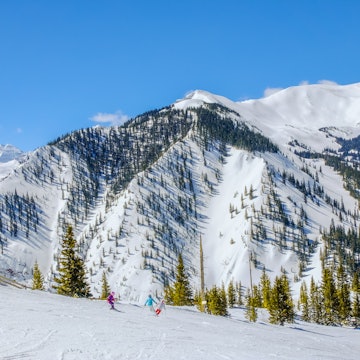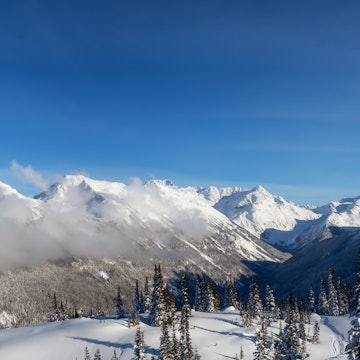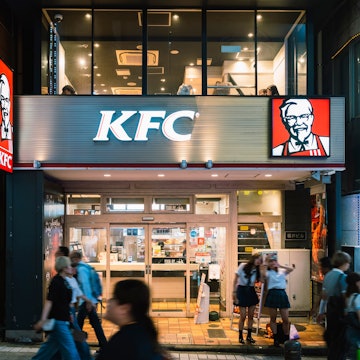

1909 Kitchen not only has a menu full of foraged ingredients when you can cook your own crab catch, it's helmed by a Top Chef 2019 winner. © Johanna Read / Lonely Planet
The trap sinks into Clayoquot Sound’s gray-blue water. How many crabs will scuttle in to investigate, I wonder? But thoughts of crabs quickly leave my head as Captain Jeff Warden starts to explain where and how our eyes should actually be searching for bears.
We’re on a wildlife tour with Tofino Resort + Marina’s Adventure Centre. Tofino is at the tip of Vancouver Island’s long Esowista Peninsula, in Canada’s most westerly province of British Columbia. When the road between Hidden Peak and Triple Peak – first carved in 1959 – was finally paved in 1972, isolated Tofino claimed the title of the western end of the TransCanada Highway; there’s still a marker at the dock on First St. Today you can reach Tofino by taking one of the BC Ferries from Vancouver to Nanaimo and then driving the scenic highway, in about three hours. Once you arrive, the only thing further west of here is Japan.

If you're here to take in the scenery and wildlife, book your stay at the Pacific Sands Beach Resort next door to the Pacific Rim National Park Reserve. The latter sits on a long beach perfect for surfing, strolling and, of course, gazing at Tofino's abundant scenery and wildlife. Tofino and Clayoquot Sound became world-famous in 1993 when 12,000 environmentalists protested the clearcutting of the ancient temperate rainforest that hugs Vancouver Island’s coasts. Clayoquot Sound (pronounced “clack-qwot”) was the site of the then-largest act of civil disobedience in Canada, with 300 people arrested in one day alone.
The land and sea those activists were protecting have been the territory of the Nuu-chah-nulth-speaking Indigenous Peoples since the last ice age. One of these First Nations, the Tla-o-qui-aht (anglicized as Clayoquot), has a village on Meares Island that has been continuously inhabited for at least 5000 years. Called Opitsaht, it sits just across the channel from Tofino.
After we lay our crab trap, Opitsaht is our first stop and the site of our first animal encounter. We admire the brightly-painted waterfront houses from the boat. Then our eyes notice eagles flying overhead and cows — yes, cows — wandering the beach, grazing on sea lettuce and eel grass.

Tofino’s wildlife
The cattle aren't domesticated – they're the descendants of cattle brought by missionaries around 1900 which have long since gone feral – but our search is for even wilder animals. We motor north and it’s not long before we see our first black bear, one of between 7000 and 12,000 that call Vancouver Island home. It glances at our boat but quickly goes back to methodically turning over rocks with its huge paws, searching for a snack.
The Institute for Coastal and Oceans Research reports that black bears have very good taste, “eating the best of what’s available.” For the lucky bears that live along the coasts of this 62-mile-wide island, that means crab in the springtime. It’s no wonder Vancouver Island black bears are bigger than their mainland cousins, growing sleek on all that marine bounty.

Thanks to Captain Jeff’s knowledge of bear habits, we see more than a half-dozen of the inky black creatures. They feed on rock crabs at the waterline, fattening up after their winter hibernation. Only one doesn’t stick around to have its photo taken. Captain Jeff says it’s likely spooked by another bear nearby, not by us. Vancouver Island’s coastal bears hardly take notice of boats, seemingly content knowing that they’ll stay a respectful distance away.
It’s easy to spot wildlife around Tofino and Clayoquot Sound. On a subsequent trip in the sunny summer, we go humpback whale watching with the Adventure Centre. We also see sea lions guarding islands of rock, seals poking their noses at us, and the occasional puffin. The cutest are the rafts of sea otters, Ewok-like animals which hold hands to stay together as they nap floating on their backs in the kelp forests just off shore.

A baker’s dozen of crab and dinner by Canada's top chef
When we’ve had our fill of watching the bears eat, Captain Jeff turns his boat back toward Tofino. When he ducks behind an island, I remember our crab trap, forgotten until now with the exhilaration of bears. We haul the trap up, now heavy with a baker’s dozen of crabs. Captain Jeff shows us how to identify their type and gender, tossing back all but the four largest male Dungeness. Canada’s Department of Fisheries and Oceans has strict crabbing regulations, and the Adventure Centre swiftly arranges fishing licences as you suit up for your trip to make sure visitors stick to the rules.
Back at the Adventure Centre’s dock, Captain Jeff helps us carry our crabs through the back door of 1909 Kitchen. Chef Paul Moran admires the catch and checks our paperwork. He’s skeptical of our ability to eat more than one of these huge crabs each, so we donate the other two to Captain Jeff and the chef.

It’s cozy inside 1909 Kitchen, with its maple-fired Mugnaini pizza oven and friendly servers. Green islands shimmer through the picture windows in the spring rain. At our April dinner, we learn that Chef Paul is a competitor in Canada’s Top Chef 2019 contest. When we return in July, we eat the work of a newly minted champion and, with my first bite of his first dish from his Cook Your Catch dinner, I understand why he won.
Chef Paul and his family have foraged for wild foods for five generations, not unlike Vancouver Island’s black bears. I took his foraging class back when he headed the kitchen at Nita Lake Lodge in the mountains of Whistler, BC. He now offers occasional Forager’s Dinners at 1909 Kitchen, complete with a morning spent learning about all things delicious and tucked away in Tofino’s rainforests.

The 1909 Kitchen menus highlight foraged foods like Vancouver Island morels and chanterelles, sea buckthorn, sorrel, fir shoots and, thanks to Chef Paul's free-diving certification, kelp and seaweed. We gorge on the labors of local growers and fishers: albacore tuna with phyllo, wild salmon, halibut cheeks, clams, seaweed salsa verde, rhubarb with oysters, and risotto with beans and carrot purée, not to mention our immense crabs, which, indeed, we’re barely able to finish.
I’m sure the bears would enjoy it, but I’m not sharing.
Johanna’s initial trip to Tofino was with the support of Tofino Tourism, BC Ferries and Pacific Sands Beach Resort. Lonely Planet contributors do not accept freebies in exchange for positive coverage.
















